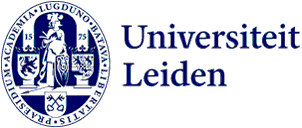
A cocktail of chemicals in surface water is more toxic than each substance individually
Pesticides can form a toxic cocktail when they occur in combination in surface water. This is the finding of research that Leiden University and the Dutch National Institute for Public Health and the Environment (RIVM) presented on Monday 14 October. The Dutch Ministry of Infrastructure and Water Management commissioned the Institute of Environmental Sciences Leiden (CML) and the RIVM to investigate the effects of pesticide mixtures on aquatic life.
Health of surface waters
Leiden researchers presented their findings on an interactive website, the Pesticide Atlas. They used data collected by water boards and the Dutch water authority Rijkswaterstaat, which includes information on the concentrations of hundreds of pesticides in surface water at hundreds of locations. The researchers assessed how these chemicals affect the ecological health of surface waters. Using formulas and toxicity data – a method developed by the RIVM – they calculated the risk of species loss.
The key finding: even where the concentrations of individual substances remain below their legal limits, species loss can still occur due to the combined effects of these chemicals. Each substance is regulated to minimise the risk of species decline to an acceptable level. However, when combined, they can create a toxic mixture that far exceeds this minimum. In 2022, this cocktail effect led to toxic pressures at more than 20% of the locations –without exceeding legal limits – that were as high or even higher than at locations where limits were breached.
This new method highlights where excessive mixture toxicity occurs and which substances contribute most to this. Such insights can be used to guide interventions and set more effective regulations.
Directive goals still far off
Mixture toxicity is gaining more attention, partly because strong evidence is emerging of its impact on human health. Additionally, this knowledge is essential for restoring healthy aquatic ecosystems. The goal of the European Water Framework Directive is to ensure surface and groundwater are chemically clean and ecologically healthy – key to guaranteeing safe drinking water, as water purification plants depend on consistent water quality.
Theoretical ecologist Marco Visser, one of the researchers, said: ‘When we look at individual substances, our surface waters seem to be gradually becoming cleaner, with fewer chemicals exceeding their limits. However, when we examine the combined effects of all toxic substances, less progress is visible, and high toxic pressure remains common.’
Pesticide Atlas
The researchers are presenting their results through the online Pesticide Atlas, an interactive website that allows both the public and policymakers to access data on pesticide concentrations. Starting 14 October, the atlas will provide a current and comprehensive risk assessment of pesticide mixtures in Dutch surface water. Visser: ‘The Atlas allows us to track variations in toxic pressure over time and across different locations. We hope this will help identify vulnerable areas and periods, which is crucial for targeted policymaking.’
